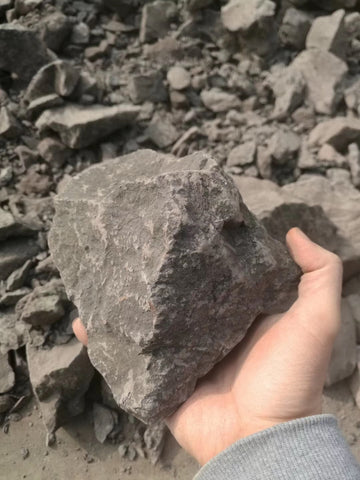Yixing Teapots: Most Popular Clays and Shapes, and the North-South Difference.
(Originally published August 31, 2019)
This is part 2 of our interview with Lin Hanpeng, the co-owner along with Chen Chunhong, of an Yixing Teapot Studio.

Lin Hanpeng in his studio.
Mud&Leaves: What kind of clay do you prefer and why? What kind of clay do you use most often when making tea?
Lin Hanpeng: I don’t have a preference for one kind of clay. I care more about the quality of the clay. Zini, zhuni, duanni, each have their own special characteristics. As long as the quality is good, then it will bring joy.
As far as what kind of clay I use most often; my hometown is Chaozhou, the home of Dancong. When I was young, I used to help my family pick Dancong, so I used to drink this tea a lot, and still do. When drinking Dancong I like to use a zhuni xiaoping (small zhuni teapot). When it comes to drinking pu’er or Yixing black tea, I tend to use zini or jiangponi. If I’m drinking green tea, I use duanni. As far as how to choose the teapot style; first you should look at capacity, second you should look at the pour and the comfort and balance in your hand. I use 100-250ml capacity teapots the most.
Mud&Leaves: In your experience, what is the most popular shape, clay and size for Yixing Teapots in China? Why do you think this clay is more popular?
Lin Hanpeng: It depends on the customs and habits of drinking tea in different areas. Generally speaking, people in the south prefer medium-to-small sized teapots (300ml capacity and smaller). People in the north prefer medium-to-large sized teapots (300ml capacity and over).
Teapots under 150ml are not as popular in the north. The reason for this, is that the Gong Fu Tea Culture in the south has a long history and a strong influence on how people drink tea. People tend to prefer tea to have a “rich” flavour, so they prefer this method and using smaller teapots. People in the north, because of the food culture, tend to drink tea more to aid digestion after a large meal. A large teapot is better for this purpose. In the south, all kinds of clays are popular. In the north, people tend to prefer zini and duanni over zhuni. The reason is that zhuni is used to make smaller teapots.
In the south, there are a lot of tea districts, so the tea culture is more developed; tea appreciation tends to be more sophisticated. As far as the styles of teapot, people in China still prefer the simple, classic designs. This is true in the north and the south. Xishi, shuiping, shipiao, fanggu, are the most popular styles of teapot.

Yixing teapots made in Lin Hanpeng's studio.
Mud&Leaves: Are there some common misconceptions about Yixing Teapots or zisha? What do you think people should know about Yixing Teapots that they might not know?
Lin Hanpeng: In my opinion, the biggest misconception is that there is no more quality original ore zisha after the closure of Huanglongshan. Actually, there is still a lot of high-quality original ore in the market. It is just dispersed among many collectors and studios. It just takes time and energy to track them down. For anyone interested in zisha teapots, my suggestion is: Focus on the quality of clay, the style, the quality of manufacture, and how practical it is. Disregard the fame of the maker.
Mud&Leaves: How has the industry changed over the last few decades?
Lin Hanpeng: I can only refer directly to my experience in the industry which doesn’t go back that far. However, from what I have seen, the market has become more reasonable. Gimmicks aren’t as influential as they used to be. Consumers are beginning to turn from collecting as the end goal to use as the end goal. I think this is a very good change because this means that more attention will be paid to the quality of the clay, the pour, comfort and feel of use. Functionality and quality of material has become more important. This has made Yixing Teapots a purer form of teaware; less flashy and simpler than before.

